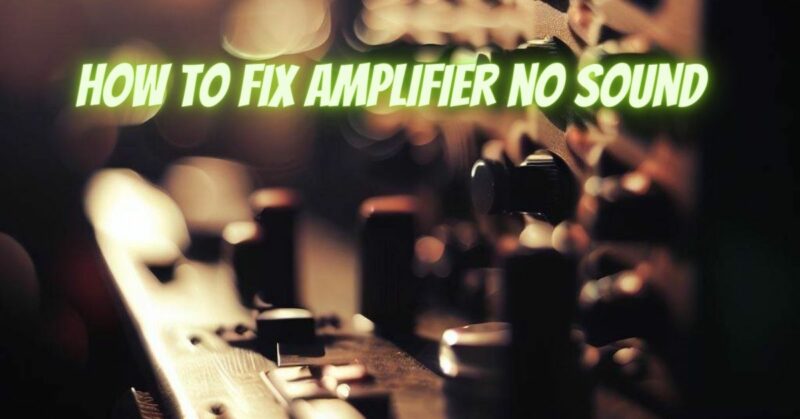There’s nothing more frustrating for a musician than powering up an amplifier and getting no sound. Amplifier no sound issues can be caused by a variety of factors, ranging from simple connectivity problems to more complex internal malfunctions. In this guide, we will walk you through a step-by-step process to help you identify and resolve common reasons for an amplifier’s lack of sound.
- Check the Basics
Before diving into intricate troubleshooting, ensure you’ve covered the basics. Verify that the power switch is on and that the amp is receiving power. Double-check that all cables are correctly connected to the amplifier, guitar (or source), and speakers. Faulty or improperly inserted cables can easily lead to no sound output.
- Examine the Volume and Gain Settings
Ensure that the volume and gain controls on your amplifier are appropriately adjusted. Sometimes, the sound may be low due to the volume being set too low or completely off. Also, ensure that the gain settings are at an appropriate level, as excessive gain can cause distortion or clipping, leading to a perception of no sound.
- Test Different Inputs
If your amplifier has multiple inputs, try connecting your instrument or audio source to different input jacks. It’s possible that a particular input may be faulty, and switching to a different one might resolve the issue.
- Inspect the Speaker Connections
Carefully check the speaker connections to the amplifier. Loose or disconnected speaker cables can lead to no sound output. Additionally, check the speakers themselves for any visible damage or irregularities.
- Clean the Jacks and Contacts
Over time, dust and dirt can accumulate in the input and output jacks, leading to poor connectivity. Use compressed air or contact cleaner to clean the jacks and ensure good electrical connections.
- Test with Different Cables and Instruments
If possible, try using different cables and instruments to rule out the possibility of a faulty cable or a problem with your instrument. Sometimes, a damaged cable or a malfunctioning instrument can be the cause of no sound output.
- Bypass Effects and Pedals
If you’re using effects pedals or processors, try bypassing them and connecting your instrument directly to the amplifier. This will help you determine if the issue lies with your effects chain rather than the amplifier.
- Check the Tubes (For Tube Amplifiers)
If you’re using a tube amplifier, check the tubes for any signs of damage or malfunction. Replace any faulty tubes and ensure they are correctly seated in their sockets.
- Test with Headphones
If your amplifier has a headphone output, try connecting headphones to check if you can hear any sound. If you do, it indicates that the amplifier’s power amp section is functioning correctly, and the issue might be with the speaker or speaker connections.
- Consult a Professional Technician
If you’ve gone through all the above steps and still have no sound, it’s best to seek the help of a qualified amplifier technician. Internal components or circuitry issues might require professional diagnosis and repair.
Troubleshooting an amplifier with no sound requires patience and methodical testing. By checking the basics, adjusting settings, testing different inputs and cables, and inspecting speaker connections, you can often pinpoint and resolve the issue yourself. However, if you’re unsure or unable to identify the problem, seeking assistance from a qualified technician is the best course of action. With a systematic approach and attention to detail, you can get your amplifier back to producing the beautiful tones it’s meant to deliver.


